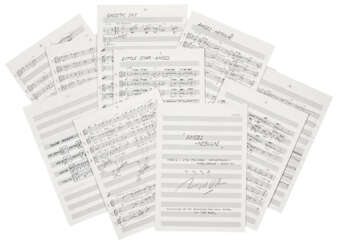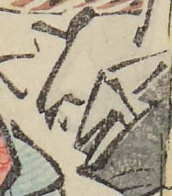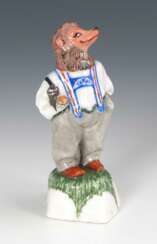igel

Nigel Cooke is a British painter who currently lives and works in Kent. His paintings depict carnivalesque figures set within harsh landscapes that are littered with urban decay. The paintings imply a strong sense of foreboding both through the depicted forms such as skulls and derelict buildings and also through his use of colour which often features bilious toxic greens. The paintings develop and change over a protracted period of time and are built up though many layers of oil paint. The paintings often balance different languages of paint within the same canvas. Vast areas of colour are combined with obsessively detailed figuration and in recent works Cooke has incorporated large sweeping gestural marks into his compositions.


Nigel Cooke is a British painter who currently lives and works in Kent. His paintings depict carnivalesque figures set within harsh landscapes that are littered with urban decay. The paintings imply a strong sense of foreboding both through the depicted forms such as skulls and derelict buildings and also through his use of colour which often features bilious toxic greens. The paintings develop and change over a protracted period of time and are built up though many layers of oil paint. The paintings often balance different languages of paint within the same canvas. Vast areas of colour are combined with obsessively detailed figuration and in recent works Cooke has incorporated large sweeping gestural marks into his compositions.


Nigel Cooke is a British painter who currently lives and works in Kent. His paintings depict carnivalesque figures set within harsh landscapes that are littered with urban decay. The paintings imply a strong sense of foreboding both through the depicted forms such as skulls and derelict buildings and also through his use of colour which often features bilious toxic greens. The paintings develop and change over a protracted period of time and are built up though many layers of oil paint. The paintings often balance different languages of paint within the same canvas. Vast areas of colour are combined with obsessively detailed figuration and in recent works Cooke has incorporated large sweeping gestural marks into his compositions.


Nigel Osborne is a British composer, educator and humanitarian activist.
He studied composition at Oxford and in Warsaw. In Poland he co-founded one of the first live electronic performance groups in Eastern Europe and worked in the Experimental Studio of Polish Radio, beginning a special relationship with electroacoustic music throughout Europe.
Nigel Osborne works extensively in long-term collaborative projects, for example with the Vienna 20jh Ensemble, the London Symphonietta, the Nash Ensemble, the Scottish Chamber Orchestra and others. Theater productions have always been an important area for him. Among the major works for the theater is an interesting opera "Electrification of the Soviet Union". His series of musical and dance collaborations - "Apollo in Despair", "Wilderness", "Zanza", "Mythologies", and in opera and musical theater - "Hell's Angels", "Faust" and others are known.
Osborne's major orchestral works include Symphony 1 for the BBC Symphony Orchestra and Sun of Venice for the Philharmonic Orchestra. Osborne is a full-time professor at the University of Edinburgh and an advisor to War Child, the charity responsible for the humanitarian aid program in Bosnia and Herzegovina. He is generally known for his extensive charity work supporting children traumatized by war, particularly in the Balkans during the Bosnian War and in the Syrian conflict, using his own music therapy techniques.


Nigel Cooke is a British painter who currently lives and works in Kent. His paintings depict carnivalesque figures set within harsh landscapes that are littered with urban decay. The paintings imply a strong sense of foreboding both through the depicted forms such as skulls and derelict buildings and also through his use of colour which often features bilious toxic greens. The paintings develop and change over a protracted period of time and are built up though many layers of oil paint. The paintings often balance different languages of paint within the same canvas. Vast areas of colour are combined with obsessively detailed figuration and in recent works Cooke has incorporated large sweeping gestural marks into his compositions.
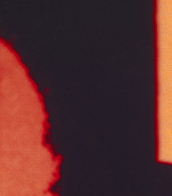

Nigel Cooke is a British painter who currently lives and works in Kent. His paintings depict carnivalesque figures set within harsh landscapes that are littered with urban decay. The paintings imply a strong sense of foreboding both through the depicted forms such as skulls and derelict buildings and also through his use of colour which often features bilious toxic greens. The paintings develop and change over a protracted period of time and are built up though many layers of oil paint. The paintings often balance different languages of paint within the same canvas. Vast areas of colour are combined with obsessively detailed figuration and in recent works Cooke has incorporated large sweeping gestural marks into his compositions.


Nigel Cooke is a British painter who currently lives and works in Kent. His paintings depict carnivalesque figures set within harsh landscapes that are littered with urban decay. The paintings imply a strong sense of foreboding both through the depicted forms such as skulls and derelict buildings and also through his use of colour which often features bilious toxic greens. The paintings develop and change over a protracted period of time and are built up though many layers of oil paint. The paintings often balance different languages of paint within the same canvas. Vast areas of colour are combined with obsessively detailed figuration and in recent works Cooke has incorporated large sweeping gestural marks into his compositions.


Christoph Weigel the Elder, full name Johann Christoph Weigel, was a German painter, engraver and publisher.
Weigel worked very successfully in the mezzotint technique. He was the first engraver to use a kind of machine for making backgrounds. He established his own printing house in Nuremberg in 1698, and worked closely with the imperial geographer and cartographer Johann Baptist Homann (1664-1724) to produce his maps. His younger brother Johann Christoph Weigel kept an art trade store in Nuremberg around the same time, and also quite successfully.
One of Weigel's most important works is the Ständebuch (Book of Classes) of 1698, which describes and illustrates with engravings more than two hundred trades and services, including mining.


Christoph Weigel the Elder, full name Johann Christoph Weigel, was a German painter, engraver and publisher.
Weigel worked very successfully in the mezzotint technique. He was the first engraver to use a kind of machine for making backgrounds. He established his own printing house in Nuremberg in 1698, and worked closely with the imperial geographer and cartographer Johann Baptist Homann (1664-1724) to produce his maps. His younger brother Johann Christoph Weigel kept an art trade store in Nuremberg around the same time, and also quite successfully.
One of Weigel's most important works is the Ständebuch (Book of Classes) of 1698, which describes and illustrates with engravings more than two hundred trades and services, including mining.


Christoph Weigel the Elder, full name Johann Christoph Weigel, was a German painter, engraver and publisher.
Weigel worked very successfully in the mezzotint technique. He was the first engraver to use a kind of machine for making backgrounds. He established his own printing house in Nuremberg in 1698, and worked closely with the imperial geographer and cartographer Johann Baptist Homann (1664-1724) to produce his maps. His younger brother Johann Christoph Weigel kept an art trade store in Nuremberg around the same time, and also quite successfully.
One of Weigel's most important works is the Ständebuch (Book of Classes) of 1698, which describes and illustrates with engravings more than two hundred trades and services, including mining.


Christoph Weigel the Elder, full name Johann Christoph Weigel, was a German painter, engraver and publisher.
Weigel worked very successfully in the mezzotint technique. He was the first engraver to use a kind of machine for making backgrounds. He established his own printing house in Nuremberg in 1698, and worked closely with the imperial geographer and cartographer Johann Baptist Homann (1664-1724) to produce his maps. His younger brother Johann Christoph Weigel kept an art trade store in Nuremberg around the same time, and also quite successfully.
One of Weigel's most important works is the Ständebuch (Book of Classes) of 1698, which describes and illustrates with engravings more than two hundred trades and services, including mining.


Christoph Weigel the Elder, full name Johann Christoph Weigel, was a German painter, engraver and publisher.
Weigel worked very successfully in the mezzotint technique. He was the first engraver to use a kind of machine for making backgrounds. He established his own printing house in Nuremberg in 1698, and worked closely with the imperial geographer and cartographer Johann Baptist Homann (1664-1724) to produce his maps. His younger brother Johann Christoph Weigel kept an art trade store in Nuremberg around the same time, and also quite successfully.
One of Weigel's most important works is the Ständebuch (Book of Classes) of 1698, which describes and illustrates with engravings more than two hundred trades and services, including mining.


Bernhard Strigel was a German painter of the Swabian school, one of the most important masters of the transitional period between the Gothic and the Renaissance.
Bernhard came from a family of artists from Memmingen. He painted works on religious and historical subjects, but became more famous as a portrait painter. The artist painted many portraits of noble citizens of his time in the spirit of the early Northern Renaissance.
Strigel enjoyed the patronage of Emperor Maximilian I and in 1515 became his court painter in Vienna. Here in the same year he created one of the earliest group portraits in Germany, a depiction of Maximilian I and his family. In the last years of his life he gave up religious work and devoted himself almost exclusively to portraiture.


Bernhard Strigel was a German painter of the Swabian school, one of the most important masters of the transitional period between the Gothic and the Renaissance.
Bernhard came from a family of artists from Memmingen. He painted works on religious and historical subjects, but became more famous as a portrait painter. The artist painted many portraits of noble citizens of his time in the spirit of the early Northern Renaissance.
Strigel enjoyed the patronage of Emperor Maximilian I and in 1515 became his court painter in Vienna. Here in the same year he created one of the earliest group portraits in Germany, a depiction of Maximilian I and his family. In the last years of his life he gave up religious work and devoted himself almost exclusively to portraiture.


Henri Weigele was a French sculptor from the late 19th century to the first third of the 20th century.
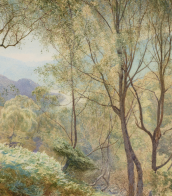

Thomas Eigel is a German photographer living and working in Hamburg.
Thomas Eigel has been involved in photography for over 35 years, starting as an advertising photographer before becoming an art director and agency owner. Eigel explores the universality of transportation, offering a new perspective on recognizable forms, from airplanes to shipping containers, and suggesting to the viewer how we are connected through mechanics and technology.


Bernhard Strigel was a German painter of the Swabian school, one of the most important masters of the transitional period between the Gothic and the Renaissance.
Bernhard came from a family of artists from Memmingen. He painted works on religious and historical subjects, but became more famous as a portrait painter. The artist painted many portraits of noble citizens of his time in the spirit of the early Northern Renaissance.
Strigel enjoyed the patronage of Emperor Maximilian I and in 1515 became his court painter in Vienna. Here in the same year he created one of the earliest group portraits in Germany, a depiction of Maximilian I and his family. In the last years of his life he gave up religious work and devoted himself almost exclusively to portraiture.
















